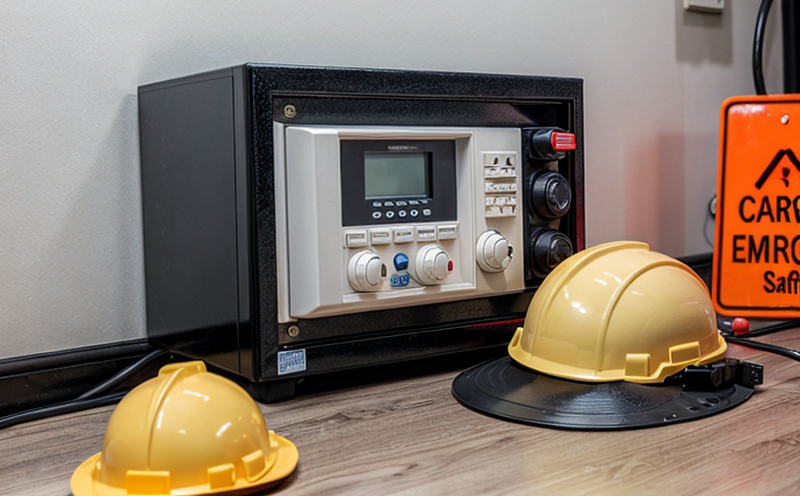FAA AC 25.1459 Flight Data Recorder Crashworthiness Testing
In the aerospace and aviation industry, ensuring the safety of passengers is paramount. The Federal Aviation Administration (FAA) mandates compliance with FAA Advisory Circulars (AC) to ensure aircraft meet high standards for safety and reliability. One critical requirement is FAA AC 25.1459, which pertains to the crashworthiness testing of flight data recorders (FDRs). This standard ensures that FDRs can withstand the harsh conditions of a crash, preserving essential flight data for post-accident investigation.
The primary goal of this testing is to verify that the FDR can survive the impact forces and environmental stresses associated with an airframe accident. The test involves subjecting the FDR to controlled crash scenarios using specialized equipment designed to simulate real-world crash conditions. Compliance with FAA AC 25.1459 is crucial for manufacturers, as it ensures their products meet stringent safety requirements set by aviation authorities.
The testing procedure involves several stages, including specimen preparation and test setup. The FDR must be prepared according to specific guidelines outlined in the standard, ensuring that all components are correctly assembled and ready for testing. Once the FDR is in place, it undergoes a series of crash simulations using drop towers or sled tests. These tests replicate the impact forces experienced during an aircraft accident.
The selection of appropriate test equipment is critical to accurately simulate real-world conditions. The testing apparatus must be capable of generating high-impact forces and controlling the direction of force application, mimicking the orientation and velocity of a crashed aircraft. Advanced instrumentation is used to monitor the FDR’s performance during the crash simulation.
Post-test analysis involves evaluating the integrity of the FDR and verifying that all data is preserved intact. This includes checking for any damage or degradation in the recording capabilities of the device. Compliance with FAA AC 25.1459 ensures that the FDR meets the stringent requirements set forth by aviation authorities, providing peace of mind to manufacturers and operators.
Understanding the importance of this testing is essential for quality managers, compliance officers, R&D engineers, and procurement teams involved in aerospace manufacturing. By adhering to these standards, manufacturers can ensure their products meet the highest safety and reliability benchmarks set by regulatory bodies like the FAA.
Why It Matters
The importance of FAA AC 25.1459 cannot be overstated in the aerospace industry. The standard ensures that FDRs are robust enough to withstand the extreme conditions of a crash, thereby protecting critical flight data necessary for post-accident investigations. Compliance with this standard is not only a legal requirement but also a commitment to safety and quality.
When an aircraft experiences a catastrophic event, it is crucial that all relevant flight data be preserved for analysis. This information can provide valuable insights into the cause of the accident, helping investigators identify potential areas for improvement in design, manufacturing, or operational procedures. Without proper crashworthiness testing, there would be no reliable means to retrieve this critical data.
From a manufacturer's perspective, compliance with FAA AC 25.1459 is essential for maintaining a strong reputation and ensuring product reliability. It demonstrates a commitment to quality and safety, which can enhance market confidence and customer trust. Non-compliance could lead to severe consequences, including legal action and potential recalls.
For procurement teams, selecting suppliers who adhere to these standards ensures that the FDRs they purchase meet the necessary safety requirements. This collaboration between manufacturers and suppliers is vital for maintaining a high level of quality throughout the supply chain.
Applied Standards
FAA AC 25.1459 specifies the crashworthiness testing procedures for FDRs, ensuring that they can withstand the forces generated during an aircraft accident. This standard is based on international standards such as ISO 8683 and EN 1429, which provide additional guidance on crashworthiness testing for aircraft components.
The standard outlines specific test procedures, including the selection of appropriate drop tower or sled test equipment. It also specifies the criteria for evaluating the FDR’s performance during and after the test. Compliance with these standards ensures that the FDR meets the required safety levels set by aviation authorities.
Manufacturers must ensure their testing facilities are equipped to meet the requirements outlined in FAA AC 25.1459. This includes having the necessary drop towers or sled systems capable of generating high-impact forces and simulating various crash scenarios. Advanced instrumentation is also required to accurately measure and monitor the FDR’s performance during the test.
The standard emphasizes the importance of thorough specimen preparation, ensuring that all components are correctly assembled before testing. This includes verifying that the FDR is properly mounted in a representative manner to simulate real-world conditions as closely as possible.
Quality and Reliability Assurance
- Test Specimen Preparation: The FDR must be prepared according to strict guidelines, ensuring that all components are correctly assembled for testing. This includes verifying the correct mounting of the device in a representative manner.
- Crash Simulation Scenarios: The FDR undergoes controlled crash simulations using specialized equipment designed to replicate real-world conditions. This involves generating high-impact forces and controlling the direction of force application.
The testing process is rigorously monitored, with advanced instrumentation used to measure and record key parameters during the test. These measurements include impact forces, acceleration rates, and any damage sustained by the FDR. Post-test analysis involves evaluating the integrity of the FDR and verifying that all data is preserved intact.
Compliance with FAA AC 25.1459 ensures that the FDR meets the stringent requirements set forth by aviation authorities. This testing provides confidence in the safety and reliability of the device, ensuring it can withstand the forces generated during an aircraft accident. Compliance also demonstrates a commitment to quality and safety, enhancing market confidence and customer trust.





